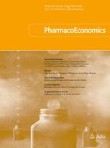
Objectives. The aim of this study was to evaluate the outcomes of acute coronary syndrome (ACS) patients undergoing percutaneous coronary intervention (PCI) via transradial artery access (TRA) or transfemoral artery access (TFA). Background. Over the last decade, evidence for the benefit of TRA for PCI has grown, leading to a steady uptake of TRA around the world. Despite this, the topic remains controversial with contrary evidence to suggest no significant benefit over TFA. Methods. A retrospective study of consecutive ACS patients from 2011 to 2017 who underwent PCI via TRA or TFA. The primary outcome was Major Adverse Cardiovascular Events (MACE), a composite of death, myocardial infarction (MI), target lesion revascularisation (TLR), or coronary artery bypass graft surgery (CABG) at 12 months. Secondar y outcomes included Bleeding Academic Research Consortium (BARC) bleeding events scored 2 or higher, haematoma formation, and stent thrombosis, in addition to all individual components of MACE. Results. We treated 3624 patients (77% male), with PCI via TFA (n = 2391) or TRA (n = 1233). Transradial artery access was associated with a reduction in mortality (3% vs 6.3%; ), MI (1.8% vs 3.9%; ), CABG (0.6% vs 1.5%; ), TLR (1% vs 2.9%; ), large haematoma (0.4% vs 1.8%; ), BARC 2 (0.2% vs 1.1%; ), and BARC 3 events (0.4% vs 1.0%; ). On multivariate Cox regression analysis, TFA, age ≥ 75, prior PCI, use of bare metal stents, cardiogenic shock, cardiac arrest, and multivessel coronary artery disease were associated with an increased risk of MACE. Conclusion. Despite the limitations secondary to the observational nature of our study and multiple confounders, our results are in line with results of major trials and, as such, we feel that our results support the use of TRA as the preferred access site in patients undergoing PCI for ACS to improve patient outcomes.











